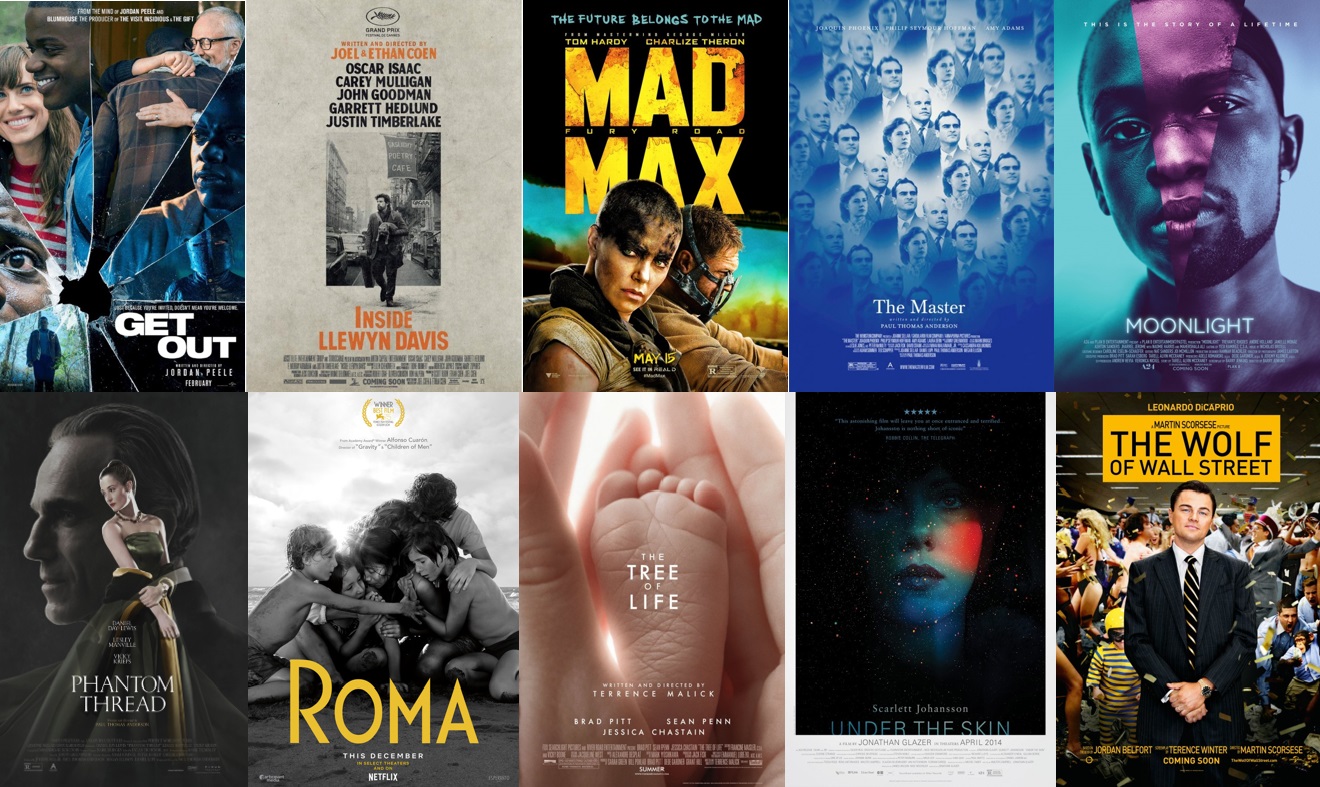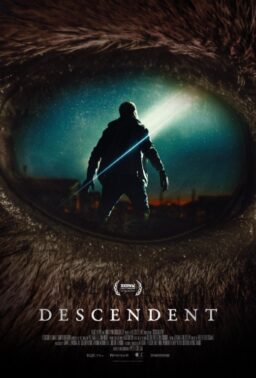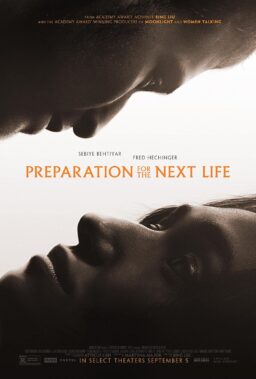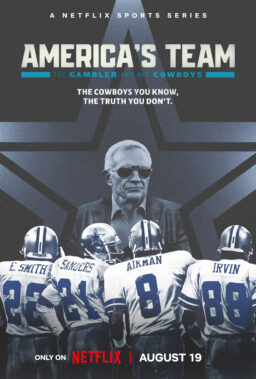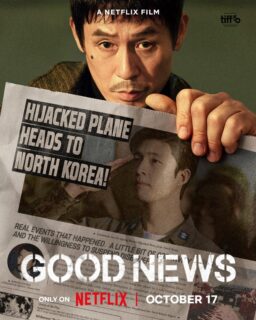As the decade ends, more of the conversation seems to be about how people watch movies (Netflix vs. theatres) than movies themselves. So we’re going to bring it back to the actual films over the next few days as the writers of RogerEbert.com reveal our staff choices for the best of the 2010s. Looking at over five dozen films chosen by the regular critics and editors of this site reveals a story of a diverse era in the medium. From a Pixar sequel in the Summer of 2010 to a 3.5-hour epic from a modern master that just hit theaters in 2019, you can see the breadth of tone, style, and creative voices that have stood out in over the past decade. Documentaries stand next to epics stand next to blockbusters stand next to intimate dramas. It is stunning to consider how different so many of these films are in intent and style. They all share one thing—these are the films that people will be watching 10, 20, even 50 years from now—in whatever way people watch them.
We asked our editors – Brian Tallerico, Matt Zoller Seitz, Nell Minow, Nick Allen, and Matt Fagerholm – to write the capsule entries for #11-25. The list below was compiled from individual lists by Brian Tallerico, Matt Zoller Seitz, Simon Abrams, Nick Allen, Monica Castillo, Matt Fagerholm, Odie Henderson, Glenn Kenny, Tomris Laffly, Christy Lemire, Nell Minow, Sheila O’Malley, and Peter Sobczynski.
Honorable Mentions
“Annihilation,” “The Babadook,” “Beasts of the Southern Wild,” “Before Midnight,” “BlacKkKlansman,” “Blindspotting,” “Blue is the Warmest Color,” “A Bread Factory,” “Brooklyn,” “Burning,” “Call Me By Your Name,” “Certified Copy,” “A Dangerous Method,” “Dawson City: Frozen Time,” “Dogtooth,” “Elle,” “Ex Machina,” “The Farewell,” “Fences,” “First Reformed,” “The Florida Project,” “Fruitvale Station,” “Gone Girl,” “Goodbye to Language,” “Hidden Figures,” “Holy Motors,” “Inception,” “The Irishman,” “La La Land,” “Last of the Unjust,” “The Love Witch,” “Madeline’s Madeline,” “Marriage Story,” “Minding the Gap,” “Only Lovers Left Alive,” “Paterson,” “Personal Shopper,” “A Quiet Passion,” “Shirkers,” “Sorry to Bother You,” “Star Wars: The Last Jedi,” “Stories We Tell,” “Toy Story 3,” “Zama,” and “Zero Dark Thirty”
The 25 Best Films of the 2010s

25. “Boyhood” (2014)
Watching Richard Linklater’s “Boyhood” makes us such a part of the family on screen that we begin to feel like we are watching our own home movies. Filmed over a twelve-year period, the production process allows us to watch Mason (Ellar Coltrane) grow up in a continuous span of 2 hours, 46 minutes. Linklater filmed his cast for just a few days each year, giving us only a few short scenes to catch up with Mason’s life, including the evolution of his relationship with his father (Ethan Hawke) and mother (Oscar-winner Patricia Arquette) and the ups and downs of adolescence. There are glimpses of the cultural and technological touchstones of the era, from staying up until midnight to get the latest Harry Potter book to playing with the clamshell version of the Gameboy. As often is the case with Linklater, “Boyhood” feels so improvised and intimate that its tone resembles a documentary, but it never loses his sure sense of structure and direction. By the final image, we have grown up with Mason. (Nell Minow)

24. “Melancholia” (2011)
It’s a pity that the self-sabotaging words of tireless provocateur Lars von Trier doomed the chances of his masterwork to truly compete with Terrence Malick’s “The Tree of Life” for the coveted Palme d’Or at Cannes. Conceived on an epic scale worthy of Stanley Kubrick, both films illustrate how our inner psychology is reflected by the behavior of the cosmos, with the timeless strains of classical music serving as a celestial soundtrack. The same foreboding excerpt from Richard Wagner’s opera, “Tristan Und Isolde,” plays at crucial moments throughout Von Trier’s picture, beginning with its extraordinary eight-minute pre-title sequence, depicting the doom-laden premonitions of its depression-addled heroine, Justine (an Oscar-worthy Kirsten Dunst), as paintings in deliberate motion. Whether it’s the rigid schedule of her wedding reception, the demands of her power-hungry boss or the earnest efforts of her husband to control their future, the oppressive forces weighing upon Justine are in direct conflict with her brain chemistry. Only in the film’s second half does her supposed “mental illness” prove to be a superpower of sorts, rescuing the young son of her sister (Charlotte Gainsbourg), from the awareness of encroaching annihilation by contriving the illusion of safety, a fitting metaphor for the vitality of dreams. (Matt Fagerholm)

23. “Manchester by the Sea” (2016)
Life does not stop after a death. Kenneth Lonergan’s “Manchester by the Sea” contemplates this hard truth with masterful grace, observing a Massachusetts janitor named Lee (Casey Affleck) and his nephew Patrick (Lucas Hedges), who have been affected by the recent loss of the boy’s father, Lee’s brother. Minutes after getting such news, there’s no space for proper processing. It’s all about awkward funeral arrangements, the reading of the will, and figuring out what to do with Patrick, a typical teenage boy in search of distraction. Lonergan’s film is built around a show-stopping sequence, which is accompanied by Albinoni’s “Adagio in G Minor.” In a movie that seamlessly blends traumatizing memories with the melancholic present, it’s a stunning moment of reflection, as Lee recalls an unspeakable tragedy that he caused in the past life he’s trying to escape, deepening the movie’s depiction of grief. Even in this moment, which ebbs and flows with the motifs of Albinoni’s piece, there are moments for pitch-black comic relief, like a stretcher that just can’t get into an ambulance. The scene is a gut punch that contains a multitude of feelings but exemplifies how Lonergan’s movie does not fear grief. Instead, it questions our solemnity to it, and treats death with the honesty and clumsiness of any other day. (Nick Allen)

22. “Once Upon a Time … in Hollywood” (2019)
One of the most divisive and talked-about movies of the decade, Quentin Tarantino’s 9th film did something so few movies seem to be able to do in a time of pop culture overload: incite prolonged conversation. Many of the now-acknowledged classics of movie history weren’t loved by everyone when they were released, but they started a discussion that continued over the years, allowing people to return to them again and again. That will happen to this gorgeous, confident slice of revisionist history from a man who turned his personal love for Hollywood into a vision that is distinctly Tarantino’s in its romantic blend of reality and nostalgia.
One of the many qualities that elevates Tarantino’s work here is the sense that this is a film he couldn’t have made earlier in his career, a movie that grapples with what’s been lost and what might have been. The movie is filled with memorable moments—the sequence with Cliff Booth (Brad Pitt in arguably his best performance) among the Manson family at Spahn Ranch is one of the best scenes of the decade by itself—but it’s the cumulative power of Tarantino’s work that makes this film one of the best of the 2010s. As the lights come on in Hollywood near the film’s end, we dread what’s to come on that fateful night for Sharon Tate. That Tarantino reshapes an actual tragedy in a way that reaffirms his belief in the magic of movies, something that his vision both laments being lost and, with its unforgettable final shot, allows us to believe in again, too. (Brian Tallerico)

21. “The Act of Killing”/”The Look of Silence” (2012/2014)
Documentaries often just point the camera at the story. Rarely, they reveal as well as depict. Directors Joshua Oppenheimer and Christine Cynn, working with an anonymous Indonesian co-director, were able to reveal the truth for the first time from the men responsible for the horrific Indonesian genocide of almost a million people in 1965-66. For decades, the entire country was in denial about what happened. If the government and the media are silent and the people responsible refuse to acknowledge what happened, how can you stop the murders from being lost to history? It turns out, you ask them to re-enact what happened, in the style of their favorite movies. Dress them up like cowboys or gangsters and they begin to relive their memories, even brag about them. Oppenheimer and Cynn did not just use the camera to record; they used it to entice the subjects to tell the truth. In “The Look of Silence,” they went a step further, bringing a family to confront the killer of their son and brother. They literally use vision testing machines so the man responsible cannot look away. These movies do the same for us. (Nell Minow)
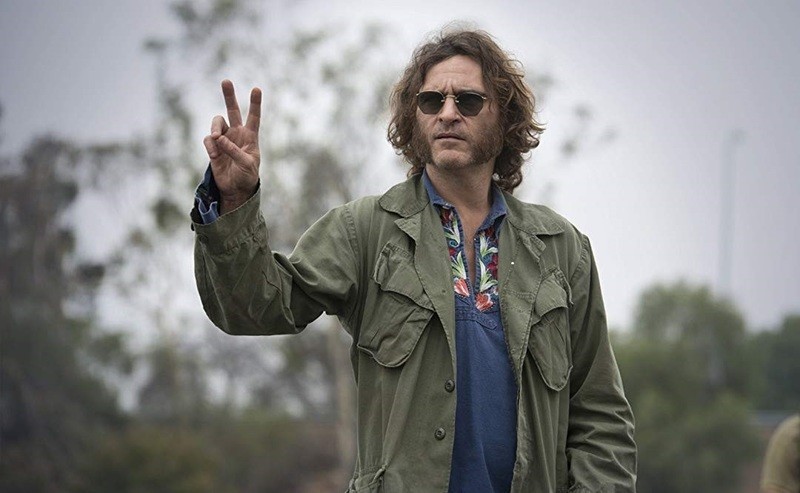
20. “Inherent Vice” (2014)
A stoned film about a stoned time, Paul Thomas Anderson’s “Inherent Vice” is also an example of a sub-type of American crime film that’s not hugely different from what’s known as a “hangout movie.” In this kind of film, there is a mystery, and it does get solved by the end (though sometimes only partially), but the exercise is ultimately a pretext to hang out with eccentric characters and soak in their time and place. Adapted from Thomas Pynchon’s novel, “Vice” is set in Los Angeles circa 1970, when the utopian dreams of the counterculture were already being replaced by a mix of nostalgia and greed. Joaquin Phoenix’s detective hero recalls The Dude as much as Philip Marlowe, a druggie struggling to remember details and keep his eye on the ball. Anderson gives lovely solos to his peerless supporting cast, which includes Katherine Waterston, Owen Wilson, Michael Kenneth Williams, Reese Witherspoon, Jena Malone, and Josh Brolin. The latter’s jar-headed right-wing cop makes for an unexpectedly poignant scene partner for Phoenix’s hippie sleuth. Their tense scene-sharing becomes something like a metaphor for the political divisions within America, or something, man. Sorry, what were we saying? (Matt Zoller Seitz)

19. “Cameraperson” (2016)
Kirsten Johnson’s “Cameraperson” is a brilliant tapestry of life experiences, assembled from deleted snippets of other films that Johnson worked on. A cinematographer by trade and a philosopher in spirit, she looks back on the people and places she has documented. Sorting through 25 years of footage, Johnson assembles them to fashion what she calls a “memoir” in the introduction, comprised of “images that have marked me and leave me wondering still.” “Cameraperson” grapples with universal themes through its recurring images—happy kids, massacre sites, government secrecy at Guantanamo Bay—and seems to contain every feeling life has to offer. Presented without context to the project the footage came from, these different sequences play out like watching someone else’s memories, their understanding of the world expanding upon our own. “Cameraperson” is a full exhibit of work, carefully curated, with new meaning each time one gets to walk around it. Inspired by the world’s greatest art form, Johnson’s film is a mesmerizing expression of what a camera can capture, especially when in the hands of someone with a true instinct of where to point it. (Nick Allen)
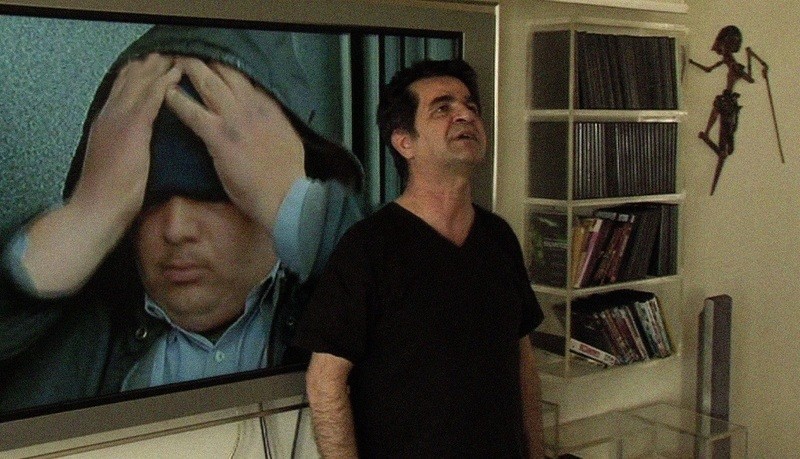
18. “This is Not a Film” (2011)
Jafar Panahi’s 2011 project “This Is Not a Film” had to be smuggled from Iran to the Cannes Film Festival inside a cake. That’s just one piece of this doc’s defiant existence, which is itself an artistic statement from one of world cinema’s greatest rebels. The title refers to the Iranian government banning Panahi from writing scripts and directing movies when he spoke out against the government in 2011. Even the end credits call it an “effort.”
However one wants to categorize it, the project evades description boxes. For example, some of it is a documentary, while other parts are staged, though the mix is seamless. Just the same, it was shot over ten days, but plays out like fake cinema verité in one afternoon, with Panahi in his apartment, milling about while being filmed by his friend Mostaba Mirtahmasb, and at one point reading an unmade screenplay that echoes his captivity. While defying a sentencing that his lawyer points out is “political, not legal,” Panahi also plays with unwritten rules about filmmaking. Panahi continues to direct, even after serving a six-year prison sentence, and “This Is Not a Film” remains a defiant microcosm of artistic rebellion. (Nick Allen)
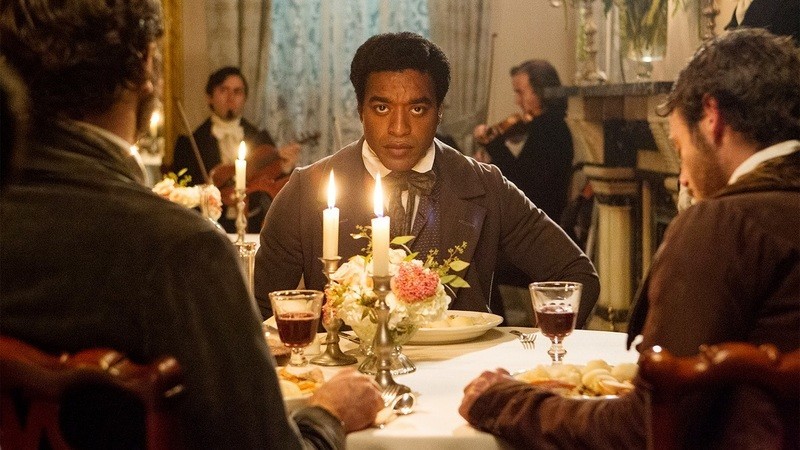
17. “12 Years a Slave” (2013)
It took a British avant-garde director, Steve McQueen, to make the first Best Picture Oscar winner to tackle one of America’s worst horrors. Solomon Northup’s 1853 memoir about his twelve-year enslavement was eloquently adapted by screenwriter John Ridley into one of the most unflinchingly honest and wrenchingly authentic portrayals of the pre-Civil War era. As a free man drugged and sold into slavery circa 1841, Northup (played by a shattering Chiwetel Ejiofor) is the perfect guide for modern viewers into this nightmarishly oppressive prison. Since life as a devoted New York family man and accomplished violinist is all he knows prior to his kidnapping, slavery is as alien and appalling to him as it is to most modern-day viewers. Some of the film’s most upsetting violence is psychological, as tyrannical plantation owners distort Bible verses to justify their righteous racial domination. Sean Bobbitt’s cinematography juxtaposes the beauty of the landscape with the dehumanizing barbarity set against it, never more potently than when Northup is hung on a branch just high enough for his toes to caress the ground. The camera keeps its distance as fellow slaves slowly go about their work, too fearful to come to his aid. It’s impossible to experience this sequence without your own neck feeling constricted. (Matt Fagerholm)

16. “If Beale Street Could Talk” (2018)
Writer/director Barry Jenkins honors writer James Baldwin, the characters in Baldwin’s novel, and the audience for his film by treating the story of two young people in love with dignity and artistry. Every element is at the highest level of creative and aesthetic achievement available to a filmmaker, including Baldwin’s lyrical words, James Laxton’s luscious cinematography, the gorgeous score by Nicholas Britell, costumes that carry the narrative and illuminate the characters, and delicate, deeply human performances. A young couple falls in love (Kiki Layne, Stephan James), and we cannot help falling in love with them too because they are so tender, hopeful and beautiful. They face hardship, rejection by his mother, terrible injustice, an unplanned pregnancy, and more. But there are also moments of heart-piercing grace. Her mother (an Oscar-winning performance by Regina King) loves them fiercely. A landlord welcomes them warmly. “Beale Street” reminds us that undiminished and imperishable love abides, even in times of hardship. Like its characters of a time nearly half a century ago, this film is “ready,” and exactly right on time. (Nell Minow)
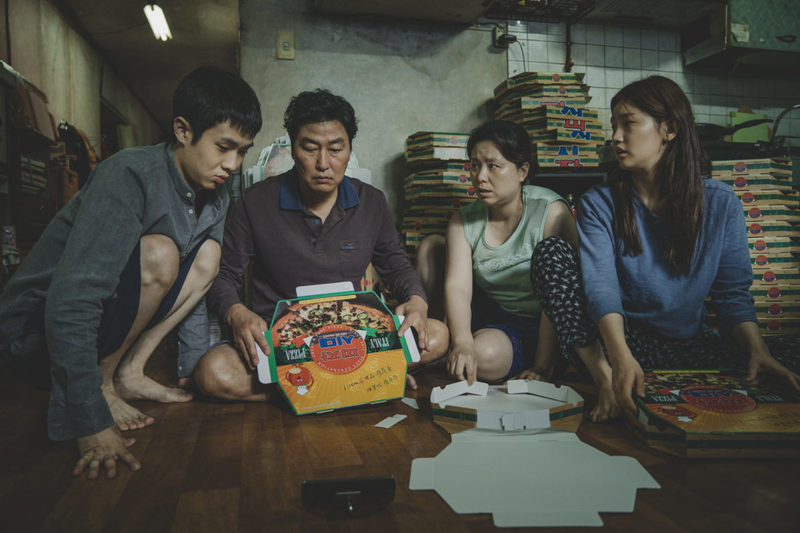
15. “Parasite” (2019)
The continuation of Steven Spielberg by other means, Korean filmmaker Bong Joon-ho has been the pre-eminent populist blockbuster filmmaker of the past decade, making clever, funny, internationally accessible, often devastating movies that also happen to be crowd-pleasers. His recent filmography includes “Snowpiercer,” “Mother,” “Okja” and the current “Parasite,” a rare movie that seems to morph from one genre to the next as you watch it, much like a creature from one of Bong’s feature films. Ostensibly, this is the story of a poor young man who becomes the tutor to a rich girl (with the collaboration of his sister) and starts insinuating himself into the rich family’s life; but the movie springs surprise after surprise, gracefully revising its tone and genre so that by the time you get to the end, it seems almost impossible to reconcile the film you started out watching with the one that just concluded. And yet the entire thing is imagined and executed so organically that it never feels as if the director is messing with viewers just to keep them on their toes. Like great Spielberg—and the Coen brothers, and Bong’s colleague Park Chan-wook—Bong’s cinema is a living thing, seeming to grow and change shape as you sit there staring at it in the dark. (Matt Zoller Seitz)
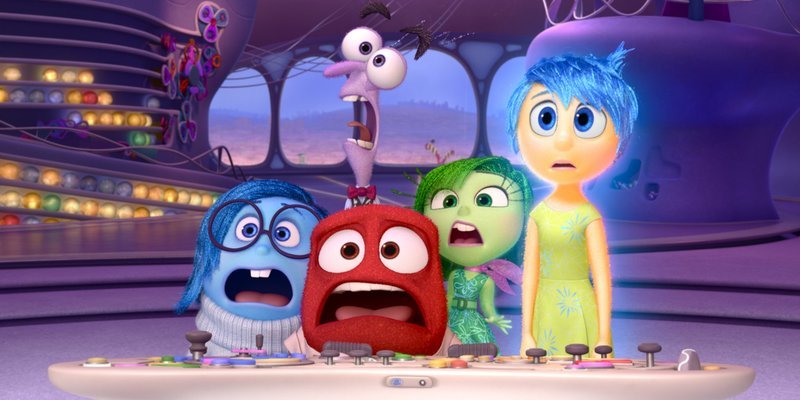
14. “Inside Out” (2015)
If you put all of Jim Henson’s Muppets together, they would equal a complete human being, since each character embodies a particular aspect of the human psyche. Thus, it’s only fitting that two of the original Muppeteers, Dave Goelz and Frank Oz, have a blink-and-you’ll-miss-it reunion voicing guards of the subconscious in Pete Docter and Ronnie Del Carmen’s tour de force. Entering the mind of 11-year-old Riley (Kaitlyn Dias), whose emotions take the form of characters like Joy (Amy Poehler) and Sadness (Phyllis Smith), this animated triumph is so inventive, you’d swear it was written by Charlie Kaufman. There’s a train of thought that “runs all over the place,” an abstraction room that renders characters one-dimensional and a studio lot where performers entertain the slumbering Riley by frantically recreating her memories with amateurish zeal. At the heart of it all is one of the most mature and essential messages ever conveyed in a children’s film: that sadness is every bit as crucial as joy in one’s own personal growth. It’s a reinvigorating moral, regardless of one’s age. Pixar’s penchant for taking risks and embracing the unknown has often made their creative potential seem beyond infinite, and this film—the studio’s best to date—has set a high bar for all subsequent mainstream releases geared toward young viewers, not to mention the young at heart. (Matt Fagerholm)

13. “Silence” (2016)
Thanks mainly to his less-than-enthused take on superhero films, Martin Scorsese has been stereotyped as an old guy who makes films about gangsters, even though only a fraction of his 50+ year filmography fits the description. It’s more accurate to call him a director who makes films about societies and their ethical systems, and—fittingly, for a Little Italy native who grew up around street hoods but originally studied to be a priest—he’s been fascinated by religion, spirituality, and cultural relativity his whole life, particularly in relation to rebellion and violence. He has examined these subjects in films as diverse as “Kundun,” “The Last Temptation of Christ,” his remake of “Cape Fear” (infused with Evangelical fervor and fear of damnation) and one of his late masterpieces, “Silence,” about Jesuit priests from Portugal (Andrew Garfield, Adam Driver, Liam Neeson) trying to spread Christianity within the closed island nation of Japan.
As is always the case with Scorsese, “Silence” is subjective, raw, and intensely passionate when it comes to depicting the emotional and physical suffering of individuals. This is a brutal film, particularly when the Japanese imprison and torture the Jesuits to force them to commit apostasy. But it becomes detached, at times almost academically cool-headed, when it pulls back for a wider look at the competing/conflicting value systems on display. We empathize with the Jesuits at first because they’re at the center of the narrative, but the more we hear from Japanese characters, the more we begin to understand why they’re so adamant about refusing the Europeans access to their land in order to spread different ideas without their approval. Based on a 1966 novel by Shūsaku Endō, this is also a terrific study in anthropology as practiced by people outside of the cultures they’re examining. Shūsaku’s novel (and the original Japanese film based on it) tried to understand the mentality of European missionaries, while Scorsese is an Italian-American Catholic sincerely attempting to understand the point-of-view of 17th century Japanese cultural gatekeepers. To consider the lineage of this story as it passed from one artist and country to another is to realize that art is an ongoing international conversation, unconstrained by time and changing styles, unimpeded by borders. and ennobled by curiosity and empathy. There are no easy answers in the end, and “Silence” doesn’t pretend otherwise. This is a movie designed to provoke introspection and arguments, as well as a repository of everything its filmmaker has learned from studying other films about these subjects: simultaneously a sermon, a prayer, and a spectacle of endurance. (Matt Zoller Seitz)

12. “A Separation” (2011)
Asghar Farhadi’s masterpiece is a story of cascading understandable decisions, many informed by culture and religion. The key to its brilliance is in how much Farhadi balances the scales, refusing to demonize anyone even his story feels increasingly headed toward tragedy. We are trained as viewers, as people really, to pick sides. From a very young age, the books we read and the films we watch present us with a protagonist and an antagonist, but life doesn’t always work that way. There often isn’t a clear-cut hero or villain, especially in the construct of a disintegrating relationship or family. What’s so memorable about Farhadi’s film is the manner in which he clearly feels empathy for everyone in his story, exposing the relatable humanity in his characters, and illustrating how often we are pushed and pulled by restrictions of society. It would have been so easy to turn Nader (Peyman Moadi) or Simin (Leila Hatami) into villains—we’ve seen that movie hundreds of times before. It gives us a sense of comfort to watch people overcome the villains in their lives. But that kind of comfort food doesn’t last. Movies like this remind us life is far more gray than black and white as it lingers in memory. (Brian Tallerico)

11. “The Social Network” (2010)
Some movies are perfect storms of collaborative artists meeting at just the right time in their careers. Aaron Sorkin’s gift for dismantling ego through dialogue; David Fincher’s detailed craftsmanship; Jesse Eisenberg’s willingness to make intellect unlikable; even the propulsive rhythms of Trent Reznor and Atticus Ross—there’s not a single element of “The Social Network” that feels off. It is a perfectly calibrated and constructed film about how a misanthrope created one of the most influential companies in the world. The decade that followed Fincher’s Oscar winner and the impact and controversies around privacy and manipulation that have dogged Facebook have only deepened the legacy of this modern classic.
From the very first scene of “The Social Network,” we are watching a film that exudes confidence in every frame. We are introduced to a self-proclaimed genius (1600 on his SATs, after all) who clearly has no idea how to talk to people, even his girlfriend Erica (Rooney Mara), and the idea this man would invent a world-changing social network out of his own drunken insecurity drives the film that follows. When Mark again runs into Erica about halfway through the film, he expects his success to win her back or at least earn admiration. She tears him down. “The internet is not written in pencil, Mark, it’s written in ink,” she says. Then she adds one of the most definitive lines of the decade: “You write your snide bullshit in a dark room because that’s what the angry do nowadays.” If there’s a film that better captures the tone of the discourse and the internet in the ‘10s, I can’t think of it. (Brian Tallerico).
The Ten Best Films of the 2010s

10. “The Master” (essay by Glenn Kenny)
“It is odd to be asked to write about “The Master” in 2019. Primarily because the movie features one of the actor Joaquin Phoenix’s most searing, uninhibited, and revelatory performances. A performance from which he borrows, or at least echoes, or recalls maybe, extensively in this year’s “Joker.”
In “The Master,” Freddie Quell is first seen in the Navy, near and at the end of World War II; his actions and his small but vivid patches of dialogue (as when he describes the best way of getting rid of crab lice) suggest an infantilized sexuality and a near-constant state/pursuit of inebriation. Arthur Fleck of “Joker” has no enthusiasm for drink—he’s already on a bunch of ineffectual meds in any case—and his infantilization extends not so much to the realm of sexuality as to idealized romance.”

9. “Get Out” (essay by Odie Henderson)
“If nothing else, Jordan Peele’s magnificent social thriller “Get Out” deserves its place on this list for its invention of The Sunken Place. How many other movies of this decade have not only coined a phrase, but also applied it to a concept this symbolically potent and physically threatening? Our first voyage there is unforgettable. The visual poetry of tear-streaked Chris (Daniel Kaluuya) falling helplessly into the void, pushed by an oppressor wielding the most genteel items as weapons, is the stuff not of nightmares but of night terrors. Peele is clever enough to disguise his scariest concept as a hypnosis-based cure for smoking, saving the full brunt of its horror for the moment we realize it’s a trial run for something far more sinister. In both cases, our hero unconsciously gives up his autonomy while still being present enough to know that it is gone.”
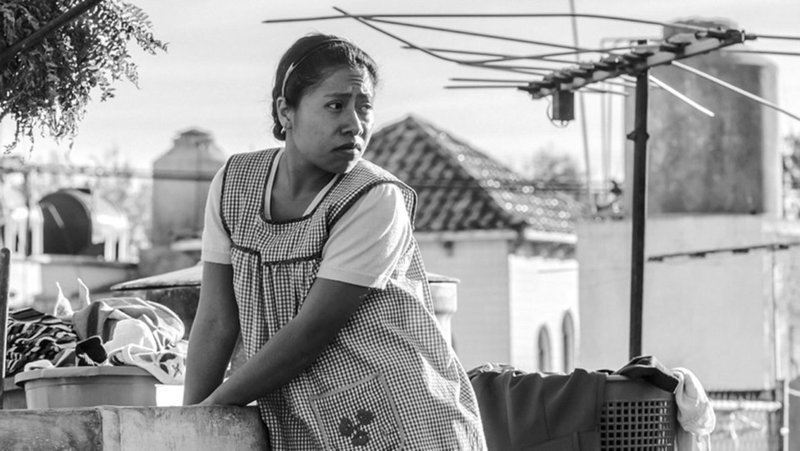
8. “Roma” (essay by Monica Castillo)
““Roma” is a movie with its heart in the past and present. Although each frame is a meticulously recreated memory from director, writer and cinematographer Alfonso Cuarón’s childhood in 1970s Mexico City, “Roma” is filtered not through his own experience or that of a film camera but by a character based on his family’s caretaker and domestic worker, Liboria “Libo” Rodríguez, and brought to the big screen in crisp digital black-and-white images. The movie is an empathetic portrayal of what Cleo (Yalitza Aparicio), Libo’s fictionalized stand-in, may have felt enduring personal tragedies as she’s forced to take on the emotional burdens of her employers’ divorce. “

7. “Under the Skin” (essay by Simon Abrams)
“”Under the Skin” is an immersive, disarming work of modern horror and science-fiction. It’s the kind of movie that rewards viewers’ patience through hypnotic, precise acting, cinematography, and sound design. Its plot and themes are also either basic or essential, depending on how thoroughly the movie works you over. Directed by onetime music video helmer Jonathan Glazer (“Sexy Beast,” “Birth“), who adapted Michel Faber’s novel with Walter Campbell, “Under the Skin” is a magic spell; if you disassemble it too much, it looks smaller than it feels. But when you’re in the movie’s grip, it’s overwhelming and sad, a feat of strong-arm cinematic mysticism that simultaneously clouds your mind and makes you pay extra close attention.”

6. “The Wolf of Wall Street” (essay by Sheila O’Malley)
“”The Wolf of Wall Street” didn’t really open in theatres in 2013. Rather, it galloped into town, whooping and hollering, guns blazing. The film was, I suppose, a commentary on “the times” but it went deeper than that: the present is also the past—the past predicts how things usually play out, even though nobody ever listens—and the present also serves as a warning (albeit a very weak one) for the future.”

5. “Phantom Thread” (essay by Peter Sobczynski)
If the 2010s did anything from a cinematic perspective, they proved conclusively—not that there was much doubt—that Paul Thomas Anderson deserved a position of prominence as one of the greatest American filmmakers of his era. He began the decade with “The Master” (2012), his spellbinding account of a confused and uncertain war veteran (Joaquin Phoenix) who falls under the spell of a mysterious cult and its charismatic leader (Philip Seymour Hoffman) and followed that up with “Inherent Vice” (2014), a cheerfully crackpot ‘70s-era mystery in which he managed to brilliantly transfer the singular writing style of Thomas Pynchon into cinematic terms. For most directors, a film along the lines of either one of those would be considered a career highpoint. But in Anderson’s case, they were merely prelude for what prove to be his crowning work of the decade and possibly of his career to date: “Phantom Thread.”

4. “Mad Max: Fury Road” (essay by Christy Lemire)
“Mad Max: Fury Road,” George Miller’s post-apocalyptic extravaganza, is a visceral thrill full of heart-pounding action sequences and brutally balletic violence. It’s one long chase that’s both epic in scope and rich in detail. It fits firmly within Miller’s established “Mad Max” movie universe, yet bursts with a powerful, original vision all its own. It is a gorgeous gut-punch. When it opened in May 2015, I wrote in a four-star review on my website, “Believe all the hype: This movie will melt your face off.”

3. “Inside Llewyn Davis” (essay by Tomris Laffly)
“If it was never new, and it never gets old, then it’s a folk song.”
This profound musing is offered by Llewyn Davis to a live audience at the start of Joel and Ethan Coen’s melancholic tale of determination and failure, after he leans into a microphone with an acoustic guitar in hand and sings, with the gentlest of clarity, “Hang me, oh, hang me.” While the singer’s words on folk songs reflect on his chosen type of music, they equally apply to the enduring quality of “Inside Llewyn Davis.” With the tenderness of its main protagonist’s instrument and the reflective lyrics of his opening tune that prophesies, “I’ll be dead and gone,” the Coen Brothers’ existential voyage into the dusty, smoky folk scene of New York’s Greenwich Village circa 1961 feels new but timeless, old yet somehow fresh, modest and meaningful all at once, all the way from its haunting beginning. Much like a folk song, the deceptively simple “Inside Llewyn Davis” sneaks up on you—by the end of it, you are ready to swear it’s a film that’s always been here, and one whose welcome will never wear out.
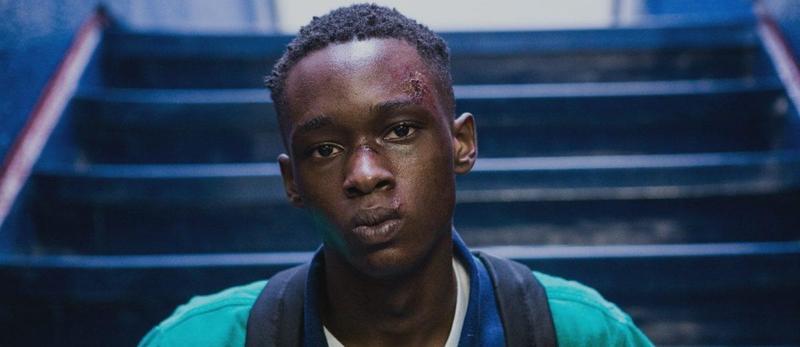
2. “Moonlight” (essay by Brian Tallerico)
After it was released, acclaimed, and then honored in one of the wackiest Oscar ceremonies of all time, there was a tendency on red carpets and in news reports to say that Barry Jenkins’ “Moonlight” was successful because it felt “universal.” It’s likely that the people who used this word meant well. They meant that they saw something and felt something that they didn’t think they would relate to in the coming-of-age story of a black kid in Miami named Chiron. “Universal” is a word that often reflects surprise at feeling empathy, but it obfuscates why this movie is a masterpiece. Not only is it a very specific film in its details, characters, setting, and emotion, but it’s also about how the labels of life are so deeply inadequate. No one on Earth is just a dealer, mother, son, teenager, addict, gay man, or black person. We are all deeper than the nicknames, brands and labels that society puts upon us, or that we place on ourselves. When Chiron and Kevin talk about just being drops of water in an ocean in the film’s centerpiece, they move closer to a deep, physical connection. In that moment, they are not just part of a vast ocean, they are not “universal.” They are real, three-dimensional and unforgettable.

1. “The Tree of Life” (essay by Matt Zoller Seitz)
Cinema history is filled with movies that try to combine the mundane and the cosmic, but few do it with as much sincerity and showmanship as “The Tree of Life,” our choice for the best film of the decade.
